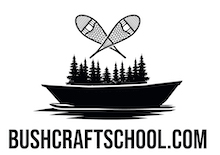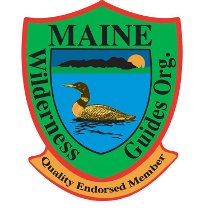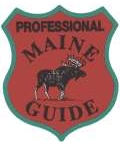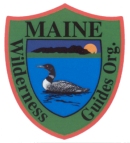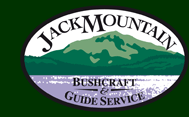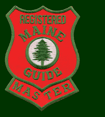Finding quality outdoor gear has become a difficult task in this age of consumerism. Sporting goods stores and mail order catalogs are overflowing with equipment, but most of it is designed to sell, not perform. This emphasis placed on looking the part has left us with outdoor clothing and gear that is next to worthless when put to the stresses of long term wilderness use. Those of us who have had clothing or gear fail to perform under heavy use have grown wary of this ethic of looking the part. Instead, we prefer clothing and gear that does what it is supposed to do. This usually leads us back to traditional equipment and styles, designed without hype and flashy looks, whose merits lay in performance and durability.
Note: This information is for general interest only. We make no claim as to whether the company has been sold and moved to China, etc., and the gear in question is now terrible. It’s stuff we like. That’s it. Since we’re not selling any of it, we make no guarantees.
CONTENTS
|
|
Knives
As an outdoor skills instructor, I have seen folks show up for courses with everything from a tiny pen knife to a military bayonet. I have come across nothing better than the knives made in the traditional Scandinavian pattern from Mora, Sweden. I like the models with carbon steel blades, because they have a flat bevel which can be sharpened to a shaving edge relatively easily, and they hold that edge for a long time. Also, the back side of the knife can be used to throw a spark when hit against a hard stone, which can be used to start a fire. Having seen “survival knives” going for upwards of $600, their price tag of roughly $12 is refreshingly easy to stomach. I like the Carbon # 2 Classic model, but most of the blades have similar characteristics – the differences lie in the handles. Get one you like.
Mukluks, Rubber Boots and Moccasins
Most of the winter footwear on the market is heavy and doesn’t keep your feet warm. Pac boots, for example, seem to always leak in wet conditions and trap moisture and become cold in frigid conditions. Most of the big companies market their footwear by insisting that it is both waterproof and breathable (for some illuminating information from an industry insider that disputes the ability of any material to be both, see the online newsletter of Wiggy’s Sleeping Bags). In the real world, there is no one type of winter footwear that does it all. For dry-cold conditions, or conditions below about 20 degrees Farenheit, you want footwear that is 100% breathable. Water-proof and water resistant footwear traps moisture at these temperatures, resulting in cold feet in just a few hours. It is important to remember that in normal conditions, without sweat, the average foot gives off 1/4 cup of moisture per day. Breathable footwear allows this moisture to escape, keeping the feet dry and warm. Due to the cold temperatures, the snow is dry, without excessive moisture to wet your footwear from the outside. The amount of insulation, in the form of liners and wool socks, should be such that the warmth generated by the feet will not melt the snow in that comes in contact with the footwear. Mukluks fit the bill perfectly for dry-cold footwear, being 100% breathable and extremely light. I have worn them for days on end in bitter cold conditions with my feet being warm and dry the entire time.
The best way to get a pair of braintan and canvas mukluks is to make them yourself. There are several places you can learn to do this, including with us in one of our mukluk-making workshops.
|
In snow with temperatures above 20 degrees farenheit, footwear should be 100% waterproof. Many boots, including the popular pac-style boots consisting of a rubber bottom sewn onto a leather upper, claim to achieve this level of water resistance, but those I have worn have all leaked around the seams sooner or later. I have found that the goal of being 100% waterproof is achieved only by boots made of rubber, top to bottom. Rubber boots, with a felt liner and some sort of insole, are my choice for wet-cold conditions. Such boots will trap the moisture emitted by the feet, and thus must be dried regularly, but they keep the water out. The Tingley rubber boots are a thin rubber overboot, designed to be worn over regular footwear. A pair of Tingleys, fitted with a felt liner and insole, weighs only ounces. They can be found at many farm and feed type stores. On winter trips, I take dry-cold and wet-cold footwear and two pairs of liners, and am prepared for whatever the weather might bring.
Tingley rubber boots can be ordered from the Lyman’s Farm Store in Fairfield, Maine. They will ship anywhere.
The US military overboots for wet, cold weather are a bit thicker than Tingleys, but don’t come in the taller heights. I’ve seen these range in price from $5 to $19. There’re available from many military surplus stores.
Felted-wool boot liners used to be available at shoe and hardware stores throughout the north, but have been replaced by thinner liners made of synthetic materials. They are still available from in regular and wide widths from Steger Mukluks in Minnesota.
Regardless of the type of footwear you have, you’ll want to outfit them with insoles for maximum warmth. I have a pair of Canadian military mukluk mesh insoles which do an amazing job of keeping my feet warm and dry. They are made of numerous layers of plastic mesh sewn together around the edge. Thus they form a barrier between my feet and the ground. Also, since they’re plastic they don’t absorb water, so they can be quickly dried by knocking the moisture out.
Traditional Crooked Knives
Crooked knives, as well as beautiful handmade knives, pack baskets, dog sleds and canoes are made by Duane Hanson at Moose River Handcrafts.
Pole & Paddle Canoe offers traditional crooked knives, with several different styles of blades, handles, and handle materials.
Canvas and Egyptian Cotton Tents and Tipis
Tentsmiths of Conway, New Hampshire, makes a whole line of traditional canvas tents and tipis. They offer wall tents made of light, windproof Egyptian Cotton, and reproduce many of the hard to find styles from earlier eras. I’ve got 4 of their tents; two egyptian cotton and two 10 oz. sunforger canvas, and have been very happy with them.
Traditional Wood Toboggans
The best way to get a traditional wood toboggan is to make one yourself. We offer workshops on building wood and plastic toboggans.
Mark Hansen makes and sells traditional toboggans and offers toboggan-making workshops. His knowlege, experience, enthusiasm, and sense of humor make his work and workshops outstanding. He can be contacted at:
Hansen Boat Works
1217 Old Shore Road
Grand Marais, MN 55604
phone (218) 387-2657
Email: whansen@boreal.org
Maine Journeys, of Charleston, Maine, sells wooden toboggans.
Plastic Trail Toboggans
The best way to get a traditional wood toboggan is to make one yourself. We offer workshops on building wood and plastic toboggans.
Pole & Paddle Canoe. Registerd Maine Guide Donald Merchant of Limerick, Maine, makes plastic trail toboggans.
Wood Canvas Canoes
I’m hard on boats. My wood canvas canoes are used on trips through my guide service and courses that include poling, lining, and running whitewater. As such, I have no interest in wooden canoes that are built for a short trip on the lake or to be displayed in antique stores. There are three canoe builders I’d buy from. I know all three builders and all are honest guys who build great, functional boats.
Don Merchant at Pole & Paddle Canoe.
Duane Hanson at Moose River Handcrafts.
Kevin Slater at Mahoosuc Guide Service.
Traditional Canoe Gear
Pole & Paddle Canoe. Owned and operated by our good friend and Master Maine Guide Don Merchant, they offer hand built 18 1/2 and 20 foot wood-canvas guide canoes, Nova Craft canoes, hand made and manufactured wooden paddles, 12 foot wooden canoe (setting) poles, metal canoe pole shoes, leather tumplines, wooden wanigans, fire irons, ice chisel heads and plastic trail toboggans.
Portable Wood Stoves for Tent and Trail
Four Dog Stove company, located in St. Francis, Minnesota, manufactures traditional-style sheet metal stoves out of ultra-light titanium. Titanium is 200 times more non-corrosive than stainless steel, has a high heat transfer rate(similar to bronze), and has a melting temperature of 3200 degrees, compared to steel’s 2600 degrees. The larger of their two titanium models weighs only 12 pounds, including legs and stove pipe! They also make traditional metal stoves, reflector ovens, and stove-top ovens.
Sheet Steel and “Cold Handle” Skillets/Fry Pans
Carbon steel or sheet steel skillets are light and, similar to cast iron, made of a porous metal that must be seasoned with fat. When seasoned they take on an almost non-stick surface, making clean up much easier than heavier stainless steel skillets. Also, unlike commercial non-stick pans, there is no coating to chip or burn off from rough handling or sparks from the fire. Stamped from a single piece of steel, the have no seams and are shaped like a pie tin with a handle. This means that they nest together for easy packing, and also that one can be inverted on top of another when a cover is needed.
In my cook kit I have two 14-inch skillets from a commercial restaurant supply store made of stamped carbon steel similar to the Cold Handle pans. They’re a bit larger which is nice because I’m routinely cooking for groups. I haven’t seen them on the internet anywhere, but they’re worth looking for. If you use any of these thin and light skillets with a gas burner such as a coleman stove, you’ll want to get a heat diffuser (also called flame tamers) to even out the heat on the pan. If you don’t you’ll have hot spots and be better off using cast iron, which we always do when weight isn’t a factor.
Stainless Steel Nesting Pots with Bail Handles
My preferred way of outdoor cooking is to hang a pot over a fire. It isn’t difficult to set up a system with numerous pots cooking at different heights above the fire. It was difficult, however, to locate a decent cooking pot made from heavy-gauge stainless steel. The solution I’ve found is a stainless steel milk pail made for farmers. If you don’t like the one I’ve linked to do a search for “stainless steel pails”.
Tanning Tools and Supplies
I’ve tanned a lot of hides and use lots of different types of scrapers for doing so. After much experimentation I’ve settled on 2 tools for wet-scraping big game: an old, dull drawknife and a commercial 2-handed fleshing tool. I buy the drawknives whenever I’m by a used tool or antique store. If they look bad and cost less than $10 I buy it and use it exclusively for tanning. The 2-handed commercial fleshing tool comes in several sizes and is available from trapping supply stores. I like it because it has a round handle (different from a flat handle as with the planer blade scrapers), which is easier on the wrist when you’re scraping a bunch of hides. I use a vertical beam to scrape all my hides, so the round handles makes even more difference. I like to switch between the two tools often because they work different muscles in my wrist, thereby avoiding things like tendonitis and repetitive stress injuries. There are lots of ways to scrape a hide, these are the ones I prefer. I tell students in our tanning courses is to try all the tools, don’t take my or anyone else’s advice on which is the best tool. Decide for yourself.
Murray’s Lures Fur Shed Supplies. Trapping equipment and supplies, including two handed fleshing tools(which make excellent wet-scrapers), fleshing beams, aprons, fur stretching guides, beaver hoops, and more.
Braintan.com Store. Planer-blade wet scrapers, dry scrapers, cables, books, videos.
Granny’s Country Store. They carry just about anything an aspiring or working primitive skills enthusiast could want. Books, videos, tools, gear, etc.
Trapping and tanning supplies can also be had from many mail order companies. One that I have been to several times in person is Cronk’s Outdoor Supples in Wiscasset, Maine. Oscar Cronk, who runs the business, entertained me with stories of his trapping exploits in northern Maine for several hours. He sells a full line of supplies, including pack baskets and two-handed fleshing tools which work great as wet scrapers. You can receive his catalog by contacting him at:
Cronk’s Outdoor Supples
133 Gardiner Road
Wiscasset, Maine 04578
(207) 882-7032
Barktan Leather for Axe and Knife Sheaths
Braintan.com sells several weights of bark-tanned leather for a variety of different projects. Unlike other leather dealer’s I’ve investigated you don’t have to buy a whole hide as they sell it by the square foot.
Ash Pack Baskets
The best way to get a pack basket is to make one yourself. We offer workshops using both pounded ash and commercial reed.
Duane Hanson of Moose River Handcrafts offers several styles and sizes of pack baskets, as well as other baskets made from ash splints. His attention to detail is evident in every basket he makes, and he harvests, pounds, weaves, and sews the straps all by hand.
Pack Basket Harnesses
It’s not difficult to make your own pack basket straps (also called a harness), but there are commercial options available as well. Pole and Paddle Canoe makes custom leather harnesses out of thick latigo leather.
Reflector Ovens
Reflector Ovens were common items in years past. Although not widely used among modern wilderness travelers, they are still a mainstay for guides and others who like fresh baked goods in the bush. Pole and Paddle Canoe offers two models of reflector oven, one made in Maine and the other made in Canada.
Woodworking and Hand Tools
I have spent countless hours searching through used tool shops, and still consider this the most cost-effective way to find good hand tools. Usually the ones you find there need a little tlc, but the steel is often superior on the older tools when compared to the ones you can get new. However, there are several companies that have a good selection of quality hand tools. Lee Valley Tools and Woodcraft are two of them.
Axes and Saws
The axe is the most versatile and useful tool to have with you in the forest. It can help you build a first-class shelter, put up a sizable pile of firewood, drive tent pegs, split logs, etc., etc., etc. As with all tools, when looking for an axe you should try and get the best one that you can. The best axes made in the world were made in the northeast before the crosscut saw came into wide use. These were hand-forged of two pieces of steel; a harder, well-tempered piece for the bit and a softer piece that was hammered around the eye. The axes were the best because they were used all day, every day in the woods and the men who used them demanded quality. The single-bit axe, or poll axe, was the standard until the double-bit came along and began replacing it. Not too long after, the crosscut saw became widely used, then the chain saw. With the proliferation of the chain saw the axe was no longer used on a daily basis, and as such there was no longer a market for well-made axes. The modern axes made in the USA are usually poured into a mold and tempered one hardness throughout. They’re often too soft to hold a decent edge, or too hard to sharpen with a file. In either case, they’re not good for much except splitting kindling or cutting roots in the ground. There are still good axes available new from Scandinavia, where the axe is still widely used. There are also many great axe heads to be found at antique stores, used tool stores, and flea markets that represent the highest echelon of the axe-maker’s craft. A good test for these is to run a new, sharp file along the edge to sharpen it. If it’s too soft, the file will push the edge over. If it’s too hard, the file will skip. If it’s just right, grab onto the axe with both hands and don’t let go until you pay for it and get it home.
Read an excellent article on Axe use before you purchase an axe.
Gransfors-Bruks, well-made axes from Sweden that you can buy new. Often hailed as the best axes available by the “gurus”, they’re made of good steel but the head is ground too hollow resulting in them being poor at splitting and often getting wedged into the piece you’re cutting. From their site you can get a free copy of their “Axe Book”, an instructional booklet on axe use, safety, and care.
Iltis Ox-Head Axes from Germany via Highland Hardware in Atlanta, Georgia.
Old and Antique Axes from Pole And Paddle Canoe. Don Merchant spends a lot of time searching through antique and used tool shops for good axes and hand tools. He’s usually got a few old axes for sale, and the steel quality is as good or better than anything made today.
Lee Valley Tools carries Swedish Gransfors-Bruks and German Iltis Oxhead axes, as well as traditional log building and forest tools such as broad axes, draw knives, and many styles of adzes.
The Crosscut Saw Company sell all sorts of people-powered tools, including one and two man crosscut saws, carpenter’s slicks(whick make great ice chisels), pit saws, and other log-building tools.
Collapsible wooden bucksaws are invaluable around camp, allowing you to saw wood for the cook fire or the woodstove and packing for ease of travel. This saw folds on itself, which protects the blade when not in use. The frame is made of hardwood and uses commonly available bow saw blades. The design comes from an older model that is no longer in production and is made by Master Maine Guide Don Merchant of Pole & Paddle Canoe.
Axe Puck Sharpening Stones
These round sharpening stones, shaped like a think hockey puck, used to be common in hardware stores. In past semester courses we’ve had trouble locating them, but I recently found them on Amazon. Woodman’s Axe and Hatchet Sharpener. You can also order them from the The Crosscut Saw Company.
Electricity-Free Tools and Supplies
These two companies have all sorts of ingenious items that function without electricity. They are major suppliers for the Amish, off-the-grid homesteaders, and others who don’t want to rely on electricity in order to accomplish their daily work.
Canvas Goods and Canoe Packs
Alder Stream Canvas. High quality canvas and Cordura outdoor gear in both traditional and modern styles by Registered Maine Guide Jane Barron. Products include Duluth Packs, other assorted bags and packs, anoraks, mukluks, ski bags, firewood totes, tarps, ground sheets, gun cases, axe sheaths, fly books, canoe paddle bags, and kitchen utensil holders. Custom work done as well.
From Jane’s Website: “Products are designed by Jane Barron with durablilty and hard use in mind. Jane’s designs are based on her experiences canoeing and hiking in Maine, Labrador, Alaska and the Yukon or while guiding canoe trips in Maine and Minnesota. Customized orders are welcomed.”
Cord
We get all of our cord from New England Marine & Industrial in Portsmouth, NH. For general use, we use braided 550 twine. I’ve found it to be superior and much cheaper than paracord. The 550 in the name is not a reference to the tensile strength as it is with paracord. Rather, it is a measurement of how many feet per pound.
Durable Wool Clothing
We’ve had semester-course students do very well outfitting themselves with wool clothing from Goodwill and Salvation Army thrift stores. While this is the labor-intensive approach, the effort has been rewarded with wool shirts, jackets, sweaters, and pants for just a few dollars. Something that has worked well for them is to buy garments several sizes too big, then wash them in warm water. The result is that the wool will felt, the weave will be tighter, and the garment will shrink and (usually) fit. This isn’t an exact science, and if it shrinks too much you can always give it as a gift to someone it will fit.
Filson wool clothes cost about twice as much as other wool clothes, but last three times as long. Their wool fabric is the best I’ve seen anywhere.
Basketry Supplies
Baskets of Joy, located in Brunswick, Maine, sells plans and materials to make countless different baskets, including pack baskets.
Metal Suspender Buttons
The old loggers who spent their lives in the woods wore suspenders to keep their pants up in cold weather. They were practical people, and as such there was a reason they did so. Tight clothing was always avoided, as it is uncomfortable and doesn’t insulate nearly as well as loose clothing. Having your pants tight around your waist, either by the nature of how they fit or the use of a belt, stops the warm air generated by your legs from rising to warm your upper body. In warmer weather this warm, moist air contributes to overheating and sweating in the crotch area, which can be uncomfortable or worse on a long trip. Using suspenders and a loose waist allows it to rise and escape through an unbuttoned shirt. In bitter cold conditions it helps to keep you warmer by allowing the warm air generated by your legs to rise and warm your upper body.
Suspenders usually come with button holes, which fit around buttons on the pants, or clips, which clip onto the fabric of the pants. Extended use of the clips has chewed through pants I’ve owned, so I’ve gone to sewing buttons onto some of my wool pants. I recently found some metal suspender buttons that serve the same purpose but are more durable and easy to attach.
Bucksaw Metal Suspender Buttons
Shaving Horses
Shaving horses are traditional woodworking vises where you have both hands free to hold a tool. Your legs provide the pressure to hold the piece you’re working on. We use them extensively in our programs for all sorts of projects including carving canoe paddles, making bows, etc.
![[photo]](http://jackmtn.com/images/mesh_insole_1.jpg)

